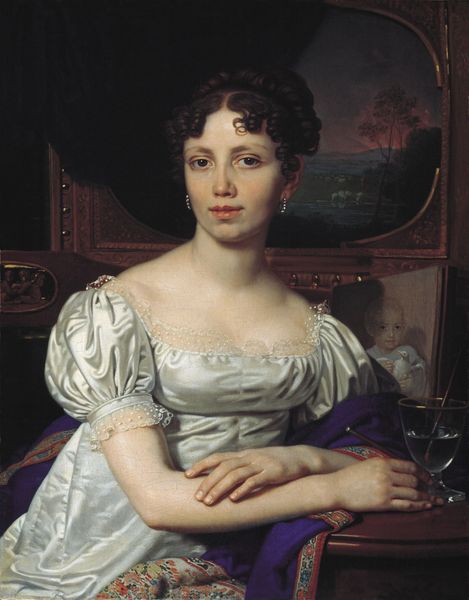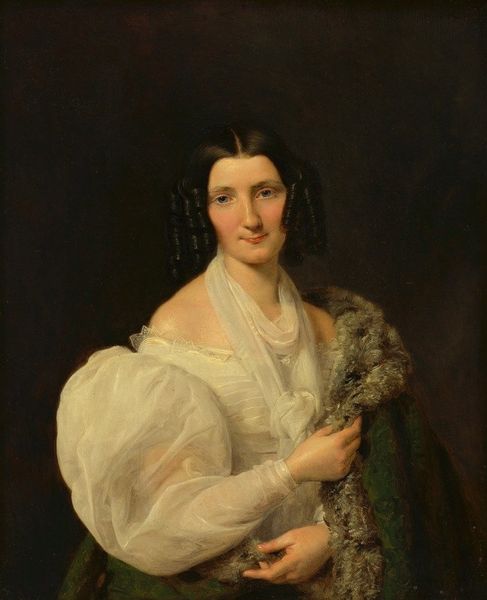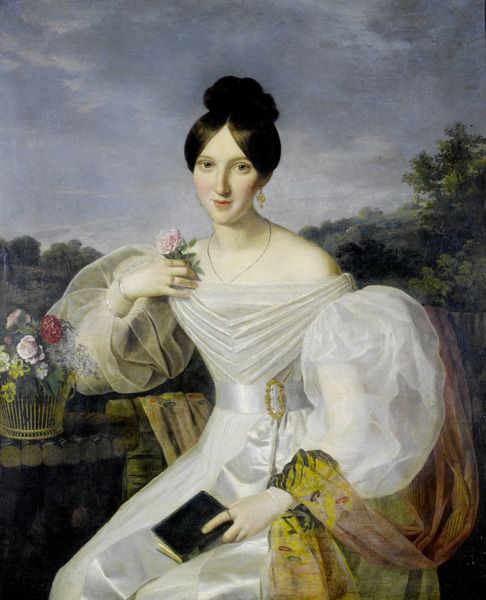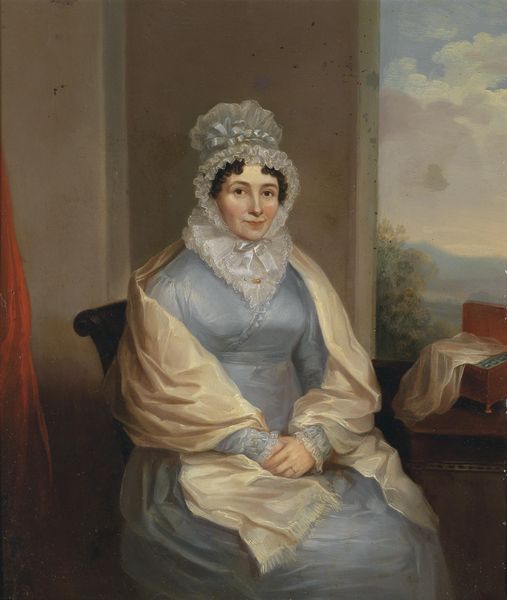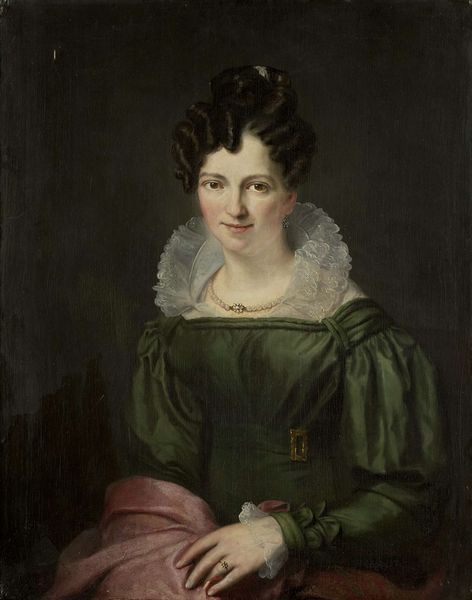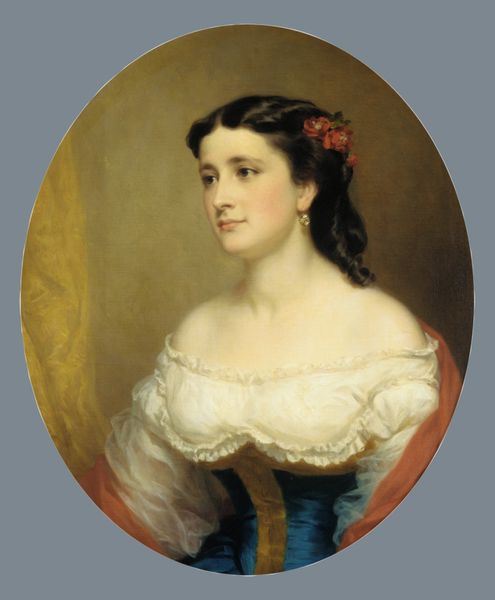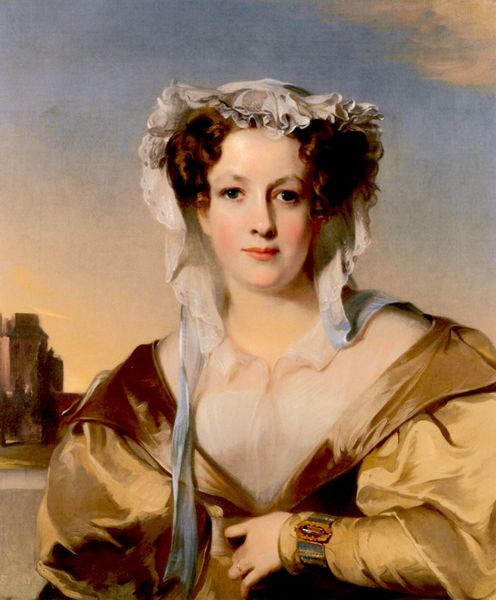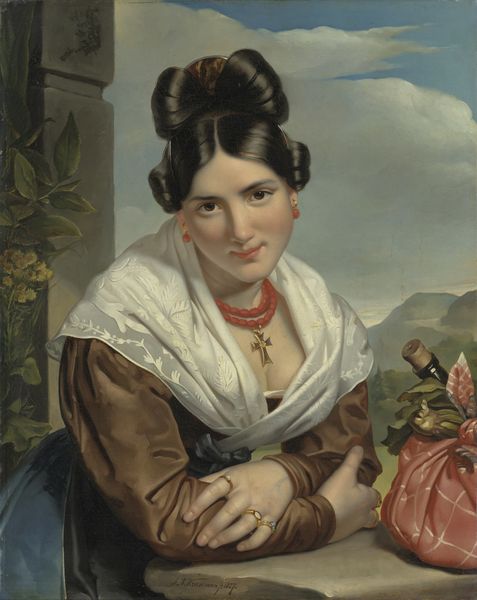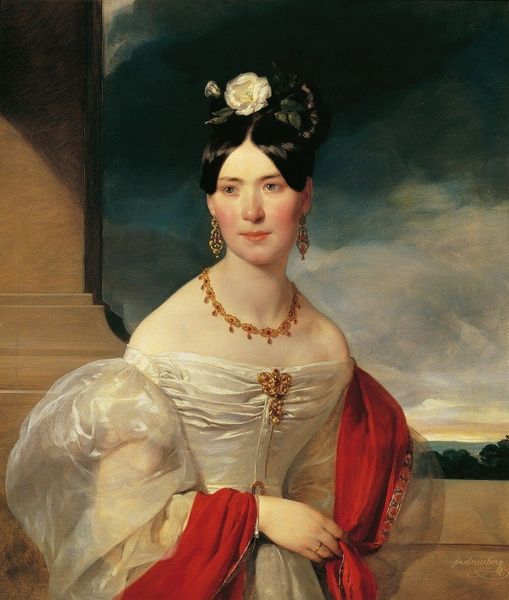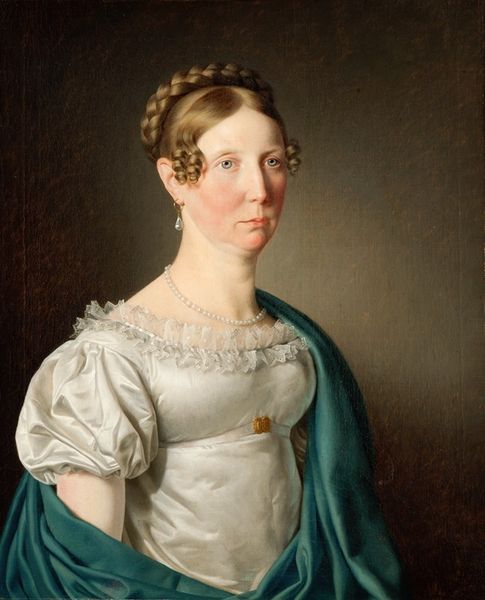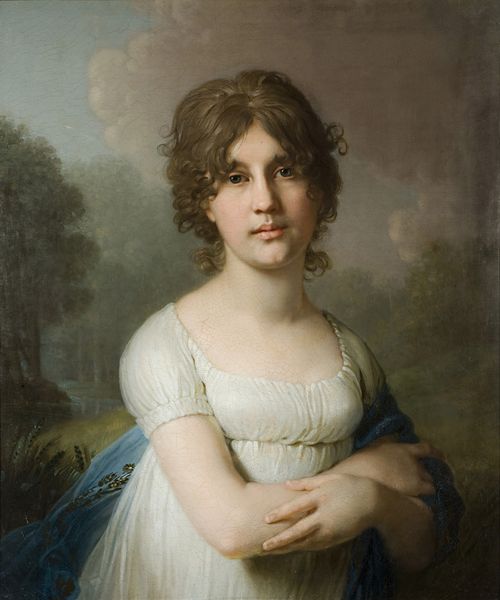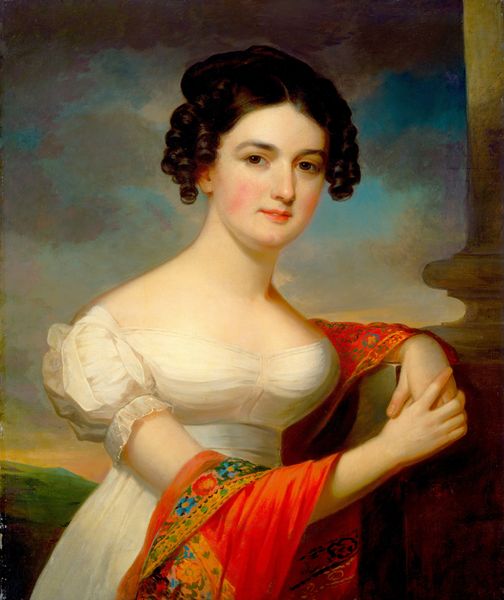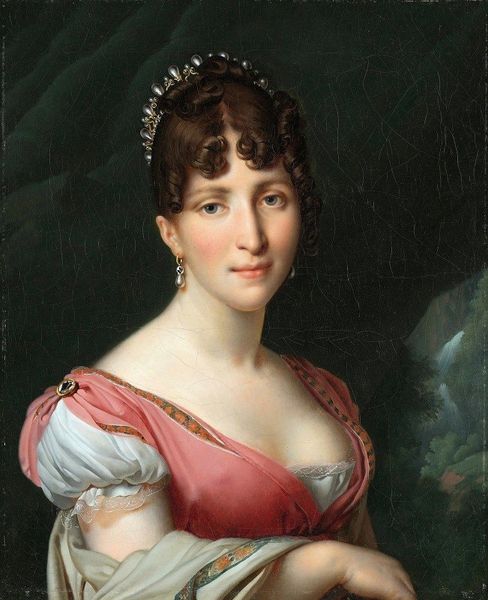
painting, oil-paint
#
portrait
#
figurative
#
painting
#
oil-paint
#
landscape
#
oil painting
#
romanticism
Copyright: Public Domain: Artvee
Ferdinand Georg Waldmüller painted this portrait of Countess Széchenyi, using oil on canvas, during the Biedermeier era. This was a time of political quietude after the Napoleonic Wars, when the bourgeoisie turned their attention toward domestic life and the celebration of family. The Countess is depicted with symbols of wealth: fine fabrics, jewelry, a parrot, and a backdrop of idyllic scenery. Her body is demurely posed, yet the soft rendering of her flesh and the slight smile on her lips suggest an intimate connection with the viewer. The era's rigid social structures dictated roles for women of the aristocracy – as wives, mothers, and hostesses. But consider the gaze of the Countess. She is not simply an object of beauty or status; there’s a sense of self-awareness and perhaps even defiance. The presence of the parrot also disrupts the scene, injecting an element of the exotic and the untamed. Through this portrait, Waldmüller captures not only the likeness of a noblewoman but also the complexities and contradictions inherent in her social position.
Comments
No comments
Be the first to comment and join the conversation on the ultimate creative platform.
